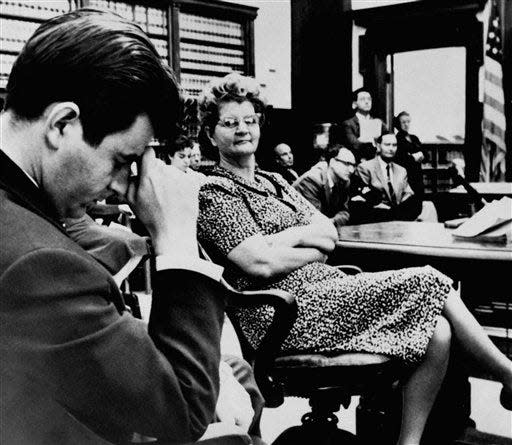Editorial: Ventura County’s age of innocence

Looking back, if one were to pick a moment when Ventura County launched its transformation from a sleepy backwater to a modern suburban community it would have to be right about the time John F. Kennedy was running for president.
To be sure, the county’s post-war development began in the 1950s, but it took off in the ‘60s. It was during that turbulent decade that the county nearly doubled in size, growing at a 6.6% annual rate – a pace that nothing before or since has come close to matching.
The east county villages of Thousand Oaks and Simi Valley zoomed from hitching posts to bedroom commuter towns – their combined populations soaring astronomically from 5,000 to 96,000 between 1960 and 1970. On the west end, the number of people in Oxnard and Ventura climbed from about 70,000 to 130,000.
ICYMI: Author Deborah Holt Larkin releases book on 1950s Ventura County murder case of Olga Duncan
A new book released this month provides a nostalgic portrait of what everyday life was like here just as that explosive change took off.
It was at about that turning-point moment that one of the most notorious crimes in county history took place – the 1958 murder of Olga Duncan, a young nurse, 7 months pregnant, who was abducted from her Santa Barbara apartment and taken to the backcountry near Ojai where she was beaten, strangled and buried in a shallow grave.
The story of that murder and the subsequent arrest and trial of Elizabeth Duncan, the jealous mother-in-law who conned two young men into killing Olga with the false promise of a $6,000 payoff, is the subject of “A Lovely Girl,” a true-crime book just published by Pegasus Books.
The trial of “Ma Duncan,” as she came to be known in the headlines of the era, became salacious national news. Flocks of reporters from national news magazines, the wire services, and metropolitan newspapers across the West descended upon the stately Ventura County Courthouse atop California Street, now Ventura City Hall.
The story of the crime is so astonishing and bizarre that it would seem comical if not for its horrendous, gruesome outcome. Intertwined in this detailed, dramatic narrative of crime and justice are the memoirs of the author, Deborah Holt Larkin, who was a young girl growing up in Montalvo at the time, the daughter of the local reporter who covered the crime.
Her father was the late Bob Holt, a reporter and columnist who wrote for the Ventura County Star-Free Press for 34 years before his retirement in 1983. Holt’s skillful reporting, whimsical columns and good humor are legendary among journalists who had the good fortune to work alongside him.
Larkin’s memories of growing up in a Ventura that was still a small town recount experiences that were broadly shared: of big rigs crashing when their brakes failed coming down the Conejo Grade, of family dinners at the Wagon Wheel Inn, of the new dam being constructed near Casitas Pass, of witnessing the opening of the first leg of the new freeway that would connect Ventura to Los Angeles.
'Never 30' podcast: Listen to stories from Ventura County's past
The activities of the attorneys and reporters involved in the trial have a similar nostalgic ring: office Christmas parties at the Pierpont Inn, and after-hours gatherings at the Sportsmen’s Bar & Grill.
All these memories are connected with the social and cultural touchstones of the time: “Dragnet” and “Ozzie and Harriet” on TV, the Russian launch of Sputnik, Chubby Checker songs playing on the radio.
There is a connection here between the era’s most notorious crime and the moment that was a turning point in Ventura County’s development. For the author, the crime and her fascination with it was an experience of lost innocence. For different reasons, looking back, that was a time when the community around her began to lose its small-town innocence as well.
This article originally appeared on Ventura County Star: Editorial: Ventura County’s age of innocence
